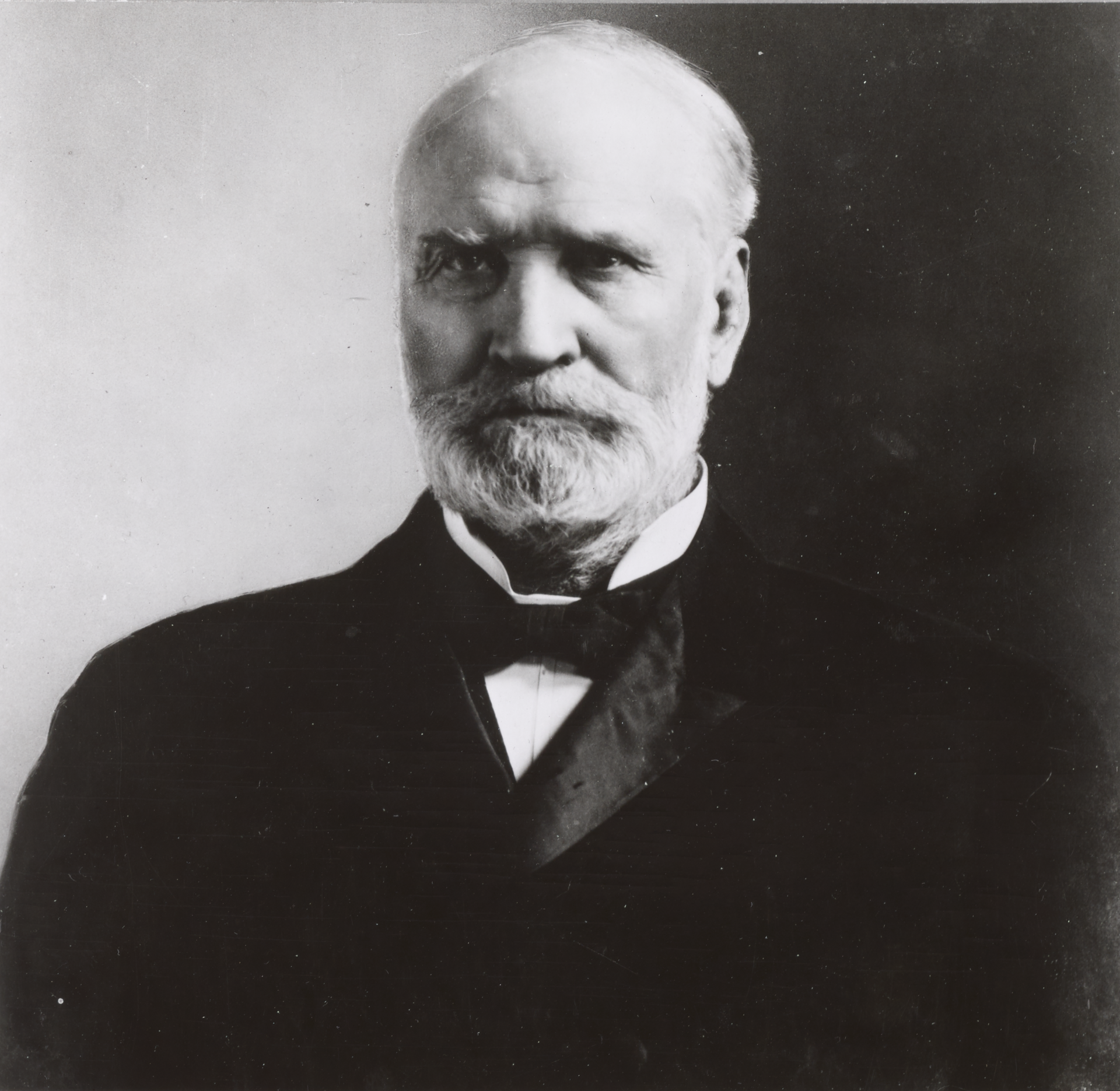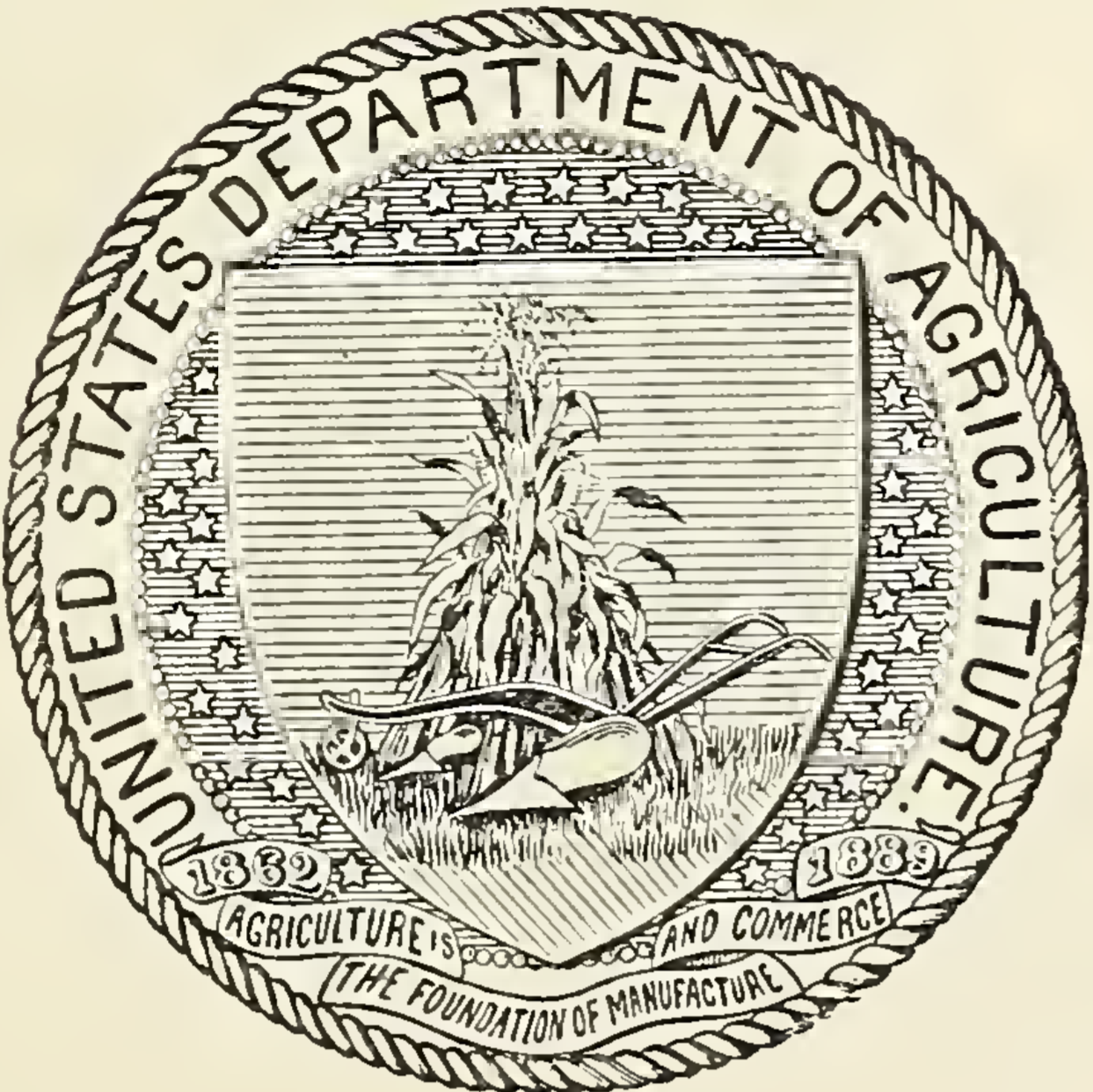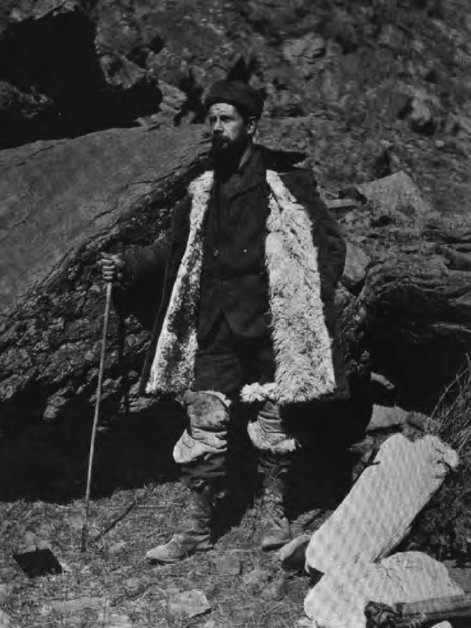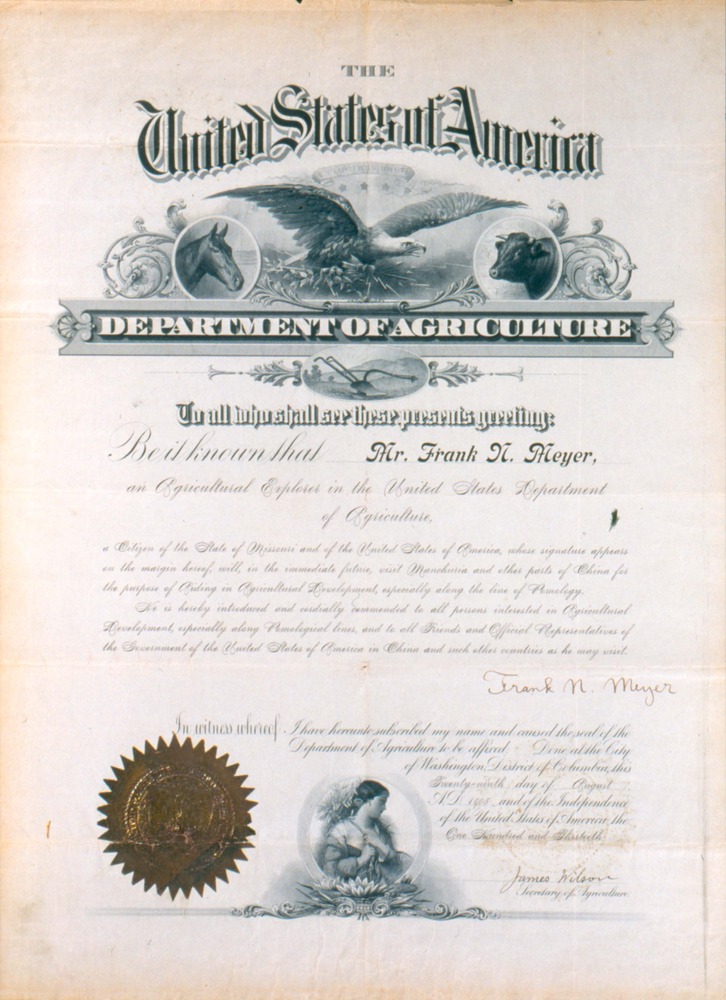Header: (Pomological Watercolor Collection)
Seed and Plant Introduction
In 1897, David Fairchild returned from abroad to Washington. David Fairchild proposed to James Wilson, The Secretary of Agriculture, the novel idea of plant introduction becoming a government enterprise.
“It seemed a logical proposition . . . that a portion of this seed fund should be diverted, and spent for the introduction of new and carefully selected crops. We therefore drew up tentative plans for a clause in the Appropriation Act which would set aside $20,000 for this purpose. I took the plans to doctor A. C. True . . . Doctor True was enthusiastic over it, and took me with him to present it to the Secretary . . . When we finished talking, the Secretary seemed deep in thought. I waited breathlessly for his verdict. ‘Yes,’ he said, ‘I think it’s a good idea. Now, how can it be done, Doctor True?’ It was simple enough, according to Doctor True. We produced the clause which we wanted inserted into the Appropriation Bill, setting aside $20,000 of the Congressional Seed Fund for the establishment of the ‘Section of Foreign Plant Introduction.’”
(Fairchild, The World as Garden, 57)
When the Appropriations Bill passed in July of 1898, it included $20,000 for a Section of Foreign Seed and Plant Introduction at the USDA, and Fairchild was placed at the head of this new section. Not long after, however, Fairchild was again traveling with Lathrop.

James Wilson, Secretary of Agriculture 1897-1913 (Wikimedia Foundation)
The Business of Seed and Plant Introduction
"The question we are often asked and which we shall try to answer here is, 'What is the object of this business?' The object of this branch of the Department is to find new crops and to introduce them to the notice of the American farmer, business man, and consumer. There is always room for something better, and in many sections there is a crying need for anything that will grow and out of which the cultivator can make money. There are plenty of good things known in one section of the country that ought to be known in others, and even in the older sections of our country changed conditions call for new crops—crops that will fit into the rotation and keep the ground occupied, crops that will come on at a time when there is no other work, or crops that will make heavy expenditures for nitrogenous fertilizers unnecessary, The object of this business, therefore, is to help the agriculture and horticulture of the country wherever a need is felt for new crops or for new varieties of old crops."
(Pieters, The Business of Seed and Plant Introduction and Distribution)

Seal of the Department of Agriculture (National Agricultural Library)
Return to Washington
After five years abroad with Mr. Lathrop, David Fairchild returned to Washington and to leading the Section of Seed and Plant Introduction. Soon, he was a married man with obligations at home and work. Fairchild needed someone else to carry out the work of being an “Agricultural Explorer”.
Frank Meyer
Frank Meyer, a Dutch immigrant, was the type of explorer needed to reach the interior of China. He could walk for miles in a day across the most difficult terrain. In July of 1905, Meyer went to Washington to meet with Fairchild, and less than one month later, he was on his way to China.

Frank Meyer in 1909 (Wikimedia Foundation)

"Mr. Meyer’s Mission."
"This is what agricultural explorers are doing--going to all parts of the world in search of new and hardier varieties of grapes, grains, alfalfas, and all other products of the soil which might be imported to America and add to our farm and orchard wealth.”
(The Washington Post)

Frank Meyer's Agricultural Explorer Certificate (National Agricultural Library)
Fairchild in Ceylon (National Agricultural Library)